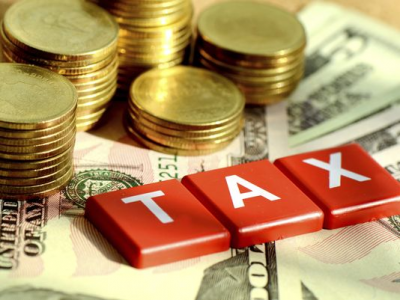It may seem extreme to plan today for the taxes you’ll pay 20, 30 or even 40 years from now, but smart people do just that. In reality, taxes have the potential to be one of, if not the largest expense during your retirement. Consider this – after decades of deferring tax on your retirement savings, the tax bill becomes due once you tap those resources for income when you leave the workforce. Therefore, you need to plan ahead if you want to minimize the taxes you will pay during your retirement years.
Income tax is due on retirement account withdrawals
Workers are told time and again to start saving as much as you can as early as possible in their company sponsored retirement plans; what most may not realize though is that action can lead to what we call the “tax torpedo” in their later years. People may have saved all their money in traditional IRA or 401(k) accounts, which have taxable withdrawals that will cut into your spending power.
All too often, people have this thought in their mind – that they’ll be in a lower tax bracket. However, that may not be the case for those who save a significant amount. Plus, the tax code could be completely different decades from now, and it is possible tax rates will rise.
Traditional 401(k)s and IRAs require participants to begin taking a taxable required minimum distribution, known as an RMD, each year after they reach age 70 ½. Thus, for someone with a significant nest egg, that RMD – and its associated taxes – can be quite large.
Tax diversification is often overlooked
Workers often spend a great deal of time diversifying their investments, but it’s equally important to diversify the taxation that comes with a person’s savings. As we mentioned above, if pre-tax money is all your savings, then you’re going to be floored at how much you’ll pay in taxes in retirement.
Pre-tax money includes funds put into traditional 401(k)s and IRAs. Those contributions are tax-deductible while you are working, but are subject to regular income tax when withdrawn in retirement. When we talk about tax diversification, we recommend workers also have money available that will be subject to lower tax limits (i.e. after-tax savings and investments) or not be subject to income tax at all, such as investments in Roth accounts or cash value life insurance.
Workers may also want to consider how to maintain some tax deductions going into retirement, such as not paying off your mortgage. This is usually because they think their investments will earn more than what they pay in interest, have the wherewithal to continue payments and like the income tax deduction for mortgage interest.
Options make Roth accounts accessible
Roth accounts are a relatively new retirement savings option, and older workers may already have a significant amount of money stored in traditional 401(k)s and IRAs. Others may make too much money to contribute to a Roth IRA, which the IRS limits to those with a modified adjusted gross income of less than $132,000 ($194,000 for couples) in 2016.
In both cases, workers may assume they are destined to pay taxes in retirement, but there are ways around them. Those with a traditional IRA can convert it to a Roth account at any time. Doing so requires a person to pay taxes on the converted amount, but that may be preferable to waiting until retirement when tax brackets could be vastly different.
Converting to a Roth IRA is also a way for high earners to get the benefits of tax-free withdrawals in retirement. These workers may be able to contribute to a traditional IRA and then convert it to a Roth account, a process known as a backdoor Roth IRA. It’s a nuance of the law – one can make a non-deductible contribution to a Traditional IRA on day one and convert to a Roth on day two, since conversions are no longer limited by income.
Even if workers decide not to convert to Roth accounts, they may find it’s in their best interest to calculate and plan for the amount of taxes they will have to pay in retirement – even if it will be decades before they are sitting on the beach, drink in hand.
